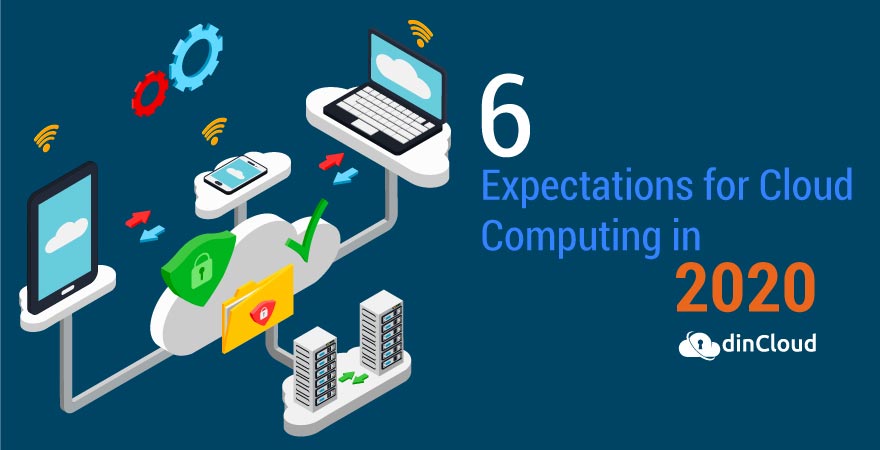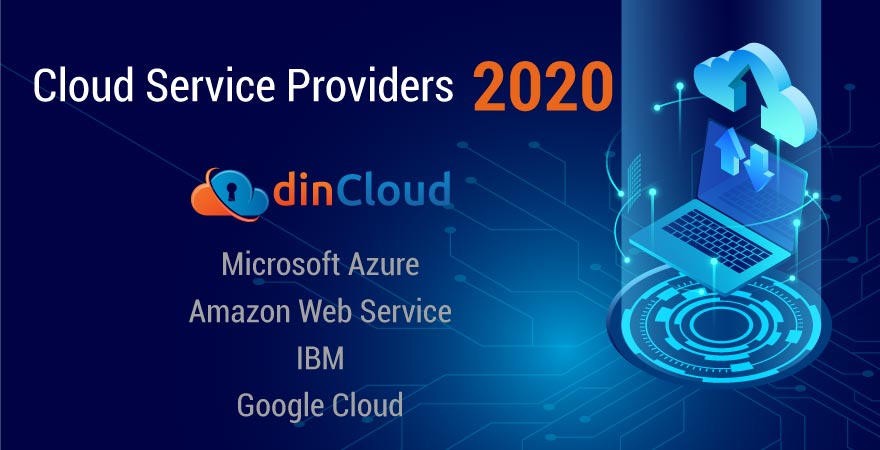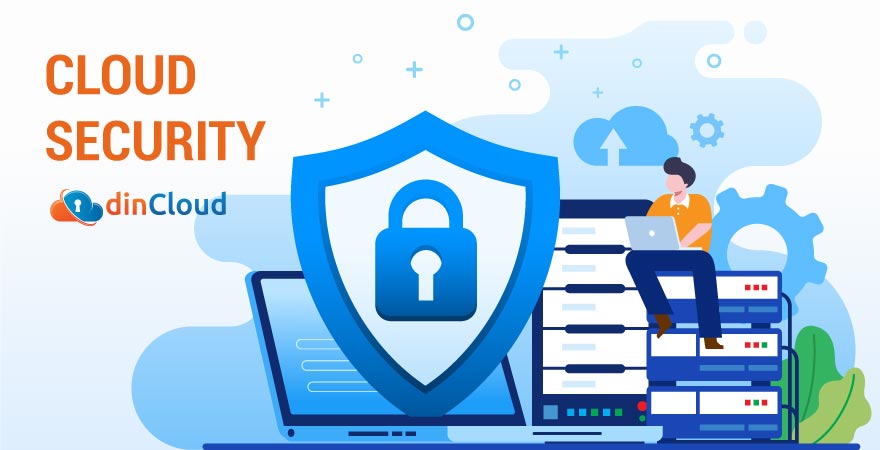In line with broad expectations, the Cloud Computing Industry demonstrated robust growth over the past year. The industry’s growth also proved the expectations about saturation of the cloud as premature. This growth is largely attributable to strong adoption of the cloud and versatile cloud based offerings.

Once we analyze the industry, cloud based offerings have continued to evolve. This in turn has contributed to healthy adoption rates and steady revenues for Cloud Service Providers (CSP). All Major Cloud Players remained proactive in Research and Development (R&D) initiatives to woo new cloud tenants.
Don’t Forget To Read: Top desktop as a service (DaaS) providers: dinCloud, Amazon, Citrix, Microsoft, VMware, and more
In this post, we will try to highlight some key expectations for the cloud computing landscape as we enter the year 2020.
Emergence of Industry Leaders
The debate of cloud saturation aside, what we can clearly see is that major players of the cloud industry have started to take a much clear shape. Being the pioneer of cloud computing and enjoying a decent head start, Amazon is still the largest player in the public cloud infrastructure by market share.

Also Read: 6 Vital Features of Securing Your Cloud
Despite a massive footprint in the domains of Operating System (OS) and software, Microsoft remained stubborn in adopting cloud computing solutions as a viable business proposition. However, under the new management, cloud solutions were accorded high priority and this has resulted in gaining a lot of ground lost to Amazon.
Tech giant Google also could not resist the temptation of cloud computing solutions and followed suit. With massive resources at its back, Google was also quick to grab a sizeable chunk of the overall cloud pie. By now, the top three industry players in the form of Amazon, Microsoft and Google are well defined and entrenched.
Also Read: Recap of Cloud Computing in 2019 and Outlook for 2020
In an attempt to differentiate themselves from one another, all the three major cloud players broadened the base of their cloud based solutions. A lot of new offerings were made part of existing solutions to retain and attract new cloud users. The cloud also became more affordable for users as more was being offered for the same price.
Going into 2020, we expect little to change among the top three members of the cloud computing food chain. As each major player is well entrenched by now, we should see the cloud war lose its steam. Focus is likely to shift on supplementing basic cloud products with cloud native applications and software.
To accomplish this goal, we should see an even enhanced collaboration between large CSPs and small software development companies. The focal point of this cooperation will be integration of small, yet highly efficient software solutions into cloud based offerings. This will also keep smaller companies quite relevant in the market.
Also Read: Microsoft’s surging cloud business Azure should terrify Amazon: analyst
Multi Cloud Will Become a Necessity
As the cloud computing industry has matured, each CSP has cemented its position in the market with some sort of competitive edge. This may come in the form of storage, compute, data analysis or any other specialized service. However, the purchase behavior and preferences of cloud users have rapidly shifted over the recent past.
Gone are the days when organizations would stick to a particular CSP because of some competitive edge and compromise on some other aspects of the solution. Over the coming year, we can expect cloud tenants to become quite powerful and demand for multi cloud deployments is likely to increase astronomically.
A multi cloud deployment would be characterized by storage coming from one CSP, while data analysis capabilities being sourced from a totally different CSP. This shift in user preferences will motivate CSPs to collaborate at a certain minimum level to meet the versatile needs of cloud tenants.
Also Read: Why Multi Cloud Computing Is Better Than Hybrid Cloud Computing?
To convert multi cloud deployments into a reality, the role of smaller software development companies will also increase as they may also play an instrumental role in providing the right enabling environment. This would function as a workload management or allocation layer, managing the cloud solutions of various CSPs in real time.
Edge Computing Will Replace Some Cloud Workloads
In today’s super-fast environment, time is of the essence. In certain scenarios, even milliseconds count. This need for ultra-fast data processing renders a typical cloud deployment infeasible. An effective solution to overcome this challenge is the concept of edge computing.
Edge computing can be defined as the localization of few time critical processes to end point devices instead of the overall cloud infrastructure. It can be defined as a supplementary mechanism that may work in tandem with a cloud based solution.
Related: The future of the IoT: from edge computing to 5G
These end point devices have to be smart, with both data collection and processing capabilities. Such edge devices will also be enabled with basic decision making ability so that time critical processes are immediately accomplished. Edge Computing is an integral part of the IoT landscape being visualized for the near future.
Over the year 2020, we should see a strong rise in the deployment of edge computing devices. In some cases, these edge devices will ultimately integrate with the overall cloud infrastructure while in others, these devices will function as standalone basic decision makers.
SaaS Will Grow
Basic cloud infrastructures barely fulfill the complex organizational needs of the present business environment. As more organizations move to the cloud, they desire the productivity and enterprise software to also become cloud native for obvious reasons of versatility and flexibility.
According To Techcrunch: Three SaaS companies we think will make it to $1B in revenue
We can expect strong demand for cloud native software solutions we call Software as a Service (SaaS). These will be highly efficient and fully embedded software solutions that will drive the day to day productivity tasks of organizations completely over the cloud infrastructure.
Data Regulation
In 2020, we should expect regulations around data management to become more stringent. Certain regulations will greatly transform the way data is collected, stored and processed over cloud infrastructures. Such laws will not only place jurisdictional limitations on data, but also redefine which data can be collected and which can’t.
In the wake of these regulations, both data management companies and CSPs will have to realign their practices to become compliant. Tougher regulations are likely to be supplemented with heavy financial, legal and penal implications to deter various stakeholders from blatant misuse of data.
Cloud Security
As more organizations and diverse workloads move to the cloud, the issue of cloud security keeps gaining more traction. We can expect 2020 to be an eventful year in the domain of cloud security. CSPs will have to accord top priority to securing their cloud based solutions.

Over 2020, we can also expect regulations and penalties around data breach to become much pronounced. The growing urgency about cloud security, coupled with heavy accompanying penalties, will keep cloud security a burning issue of the upcoming year.
Conclusion
We should expect the year 2020 to be yet another good one for the cloud computing industry. Despite some major realignments, the demand for cloud delivered solutions will be strong. Smaller CSPs will continue to go the extra mile in order to entice cloud users towards their highly customizable offerings.


